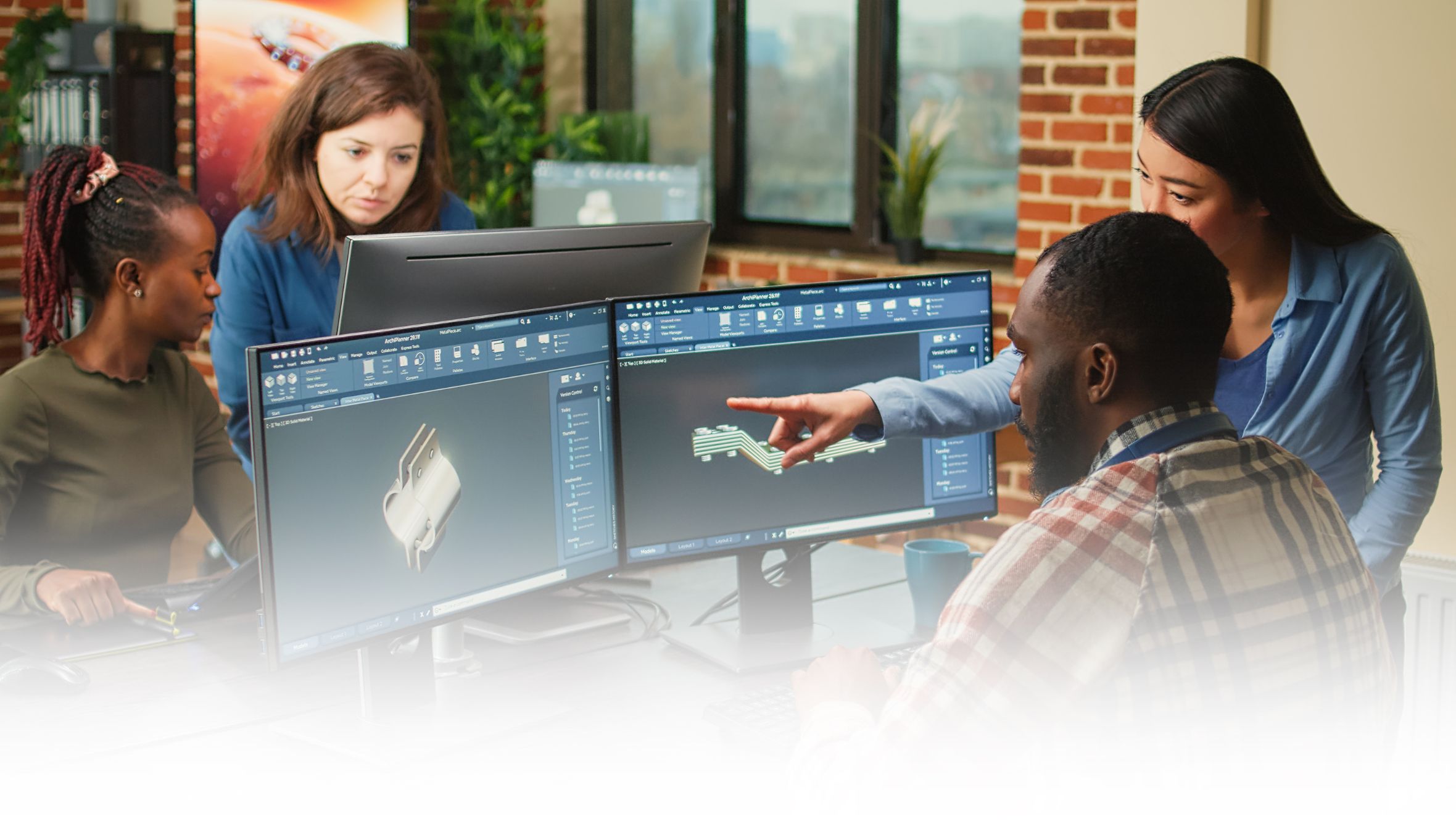A Beginners Guide to Time and Materials
A Time and Materials delivery model is most useful in situations where the aim is to start a project quickly and swiftly, and adaptations can be made along the project's course.
Technology
June 17, 2024
9 minutes read

“”
T&M allows ongoing project visibility and streamlined project management, and the contracts reflect that.
Time and Materials as a delivery model stands for any type of business agreement in which the client agrees to pay the provider by the time spent on a given project, as well as for any materials or resources used during the course of the project.
When compared to fixed price contracts, Time and Materials allows for greater adaptability during the project’s trajectory. As such, this IT delivery model is usually preferred for projects where the full scope is not completely understood upfront.
Time and Materials is one of Prime Group’s delivery models, usually adapted to IT consulting services. In this article we will discuss the applications of T&M contracts and how it is approach in IT and Engineering Consulting.
What is Time and Materials?
Time and Materials is a type of contract agreement where a company agrees to pay an IT solutions provider based on the time spent by the contractor’s employees to perform the work. Moreover, the client also pays for the necessary tools used in the development.
This delivery model ensures transparent billing and scalable resources, which help build trust in client relationships. Cost control for evolving projects is one of the main aspects that T&M allows to control, by providing adaptability to changing requirements.
How do Time and Materials contracts work?
Time and Materials (T&M) contracts are often used when the scope of the project is difficult to estimate accurately or when changes are likely to occur during the project. For processes that require a faster project initiation, T&M allows ongoing project visibility and streamlined project management, and the contracts reflect that. The key components of a T&M Contract include:
Labor Costs: These include wages (usually in hourly billing rates), and administrative costs. The contract may specify a maximum cost or percentage of the estimated price. This ensures the project does not run wildly over budget, while still accommodating unforeseen complexities.
Materials Costs: These include the actual cost of materials. This clause usually covers the costs of the entire project, rather than just labor. Provide clarity on the overall project cost and ensuring the project is completed within the client’s budget is one of the priorities of this clause.
Other Provisions: This provision outlines the consequences if either party breaches the agreement, typically used to specify warranties. This outlines how changes to the project scope or requirements can occur and when they are legally enforceable. The contract should include dates for payment, which may be at the project’s completion or at certain specified points throughout the project.
Time and Materials vs Fixed Price
Time and Materials (T&M) contracts and Fixed Price contracts are two common models used in IT projects. However, they present very differently, and there are times when one is more beneficial than the other.
For example, for Time and Materials you are paying for the actual time spent by the employees in the project, as well as for the project’s materials. In terms of flexibility, it allows for changes in the project scope and budget without requiring renegotiation, reducing the upfront planning burden.
In what come to transparency, both parties are aware of the costs and can track them easily. As such, it allows for fair compensation for expertise and better client communication.
To conclude, the advantages for Time and Materials in IT are:
- Quick Start: No need to spend time compiling a detailed specification.
- Iterative Development: Get the result iteratively, and at any time, you can decide on the functionality sufficient to launch a project.
– Flexibility: Move faster or slower by increasing or reducing the development team.
– Transparency: The development process becomes as transparent and controllable as possible.
– Opportunities for Savings: More opportunities for the development of an IT product, searching for different options and tech stack for solving problems may lead to significant savings.
As for fixed price contracts, the key elements differ. First of all comes the fixed price aspect, which means clients pay a fixed price for the scope of work and deadlines calculated. It might provide increased certainty for the client, as they know exactly how much they will be paying upfront, but the project might not evolve as swiftly. The final cost of work is agreed upon before the start of development.
Knowing this, the main advantages of a fixed price delivery model, such as Team as a Service, are:
– Predictability: The client knows the exact cost of the project from the outset, excluding any alterations.
– Efficiency: Service providers are incentivized to complete the project within budget and on time.
– Less Risk: The client has a better risk management, as they know the exact cost of the project.
When should you use a Time and Materials Delivery Model?
A Time and Materials delivery model is most useful in situations where the aim is to start a project quickly and swiftly, and adaptations can be made along the project’s course. More specifically, the T&M delivery model is useful in the following situations:
1. Unclear or Evolving Requirements: When the project scope is uncertain or changing, a T&M model allows for flexibility. As such, the the project plan and budget can be adjusted accordingly[1.
2. Long-Term Projects: Time and Materials is suitable for long-term projects where the project duration is unknown. In this project it is common for the requirements to change over time.
3. Constant Flow of Tasks: If there is a constant flow of tasks or enhancements that cannot be predicted in advance, a T&M model allows for flexible task prioritization and payment based on actual work done.
4. High Level of Team Flexibility: When the project requires a high level of team flexibility, a Time and Materials model allows for adjustments in the project plan and budget as needed, much like TaaS (Team as a Service).
5. Evolving Markets or New Technologies: Projects connected with evolving markets, new technologies, or untested facilities often benefit from the flexibility provided by a T&M model. This is why IT and Engineering are some of the industries that most benefit from this approach.
6. No Clear Final Product: If there is no clear vision of the final product and its implementation specifics, a T&M model is a good option as it allows for iterative development and adjustments during the project.
7. Need for Control: When the client wants more direct control over the project, a T&M model provides the flexibility to approve or add tasks as needed.
8. Unpredictable Expenses: If there are unpredictable expenses or risks involved in the project, a T&M model can help manage these costs by only charging for actual work done.
9. Agile Development Process: T&M supports an agile development process. As such, by adopting agile methodologies, it allows for quick changes and adjustments during the project.
10. No Fixed Estimate: If there is no fixed estimate of the time and costs involved in the project, a T&M model is a better option as it allows for flexible budgeting and payment based on actual work done.
The advantage of a T&M Contract?
The main advantages of a Time and Materials (T&M) contracts make them suitable for projects with uncertain or evolving requirements. These include long-term projects, constant flows of tasks, and those where the client wants more direct control over the project. The advantages include:
1. Flexibility: The scope of the project, as well as its duration and budget, can be changed at any time, making it easier to manage delays or issues.
2. More Project Control for Clients: Clients have more control over the project, allowing them to influence and change the construction process as needed.
3. Work and Budget Transparency: Clients are involved in every step of the process, enabling them to monitor the project’s budget and progress.
4. Budget Flexibility: Progressive billing allows clients to understand the costs at each stage of the project, and the flexibility in the budget can be an upside for contractors as well.
5. Easier Negotiation Prior to the Project’s Start: Important elements such as the deadline and costs are undetermined when the T&M contract is signed, making negotiation easier.







